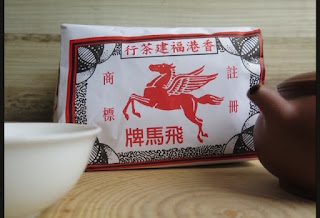Will the real 7542 please stand up. If you are a serious pu erh tea drinker. The 7542 raw pu erh cake would need no introduction. This raw cake is produced by the famous Taetea (aka Dayi) tea factory. Very old 7542 are highly sought after by both tea drinkers and tea collectors.
I myself have been drinking and buying the Dayi 7542. The pix showed a tong (7 cakes) in their original packaging. The paper wrapper stack is a 2008 production while the bamboo wrapped one is the most recent 2025 production.
If I am not wrong, the 7542 is a yearly production offered by Taetea tea factory. I noticed over the past 15 years, the tea factory used fancy wrappers to wrap their tea cakes. There is nothing wrong as there are tea collectors that might be persuaded to buy the tea because of the fancy wrappers. Not a joke.
I will try to sample the new 7542s when they are out. This is where the mystery of the 7542 appeared. Yes, every yearly batch of 7542 would taste different in terms of taste and aroma as the tea are from different yearly harvests. Well, if you are a serious tea drinker of 7542 like me, I would expect that there would be a signature taste and aroma in the tea albeit the different years. This was not the case in those 7542 I had sampled for the past 10 years.
In my personal opinion while I sampled the tea, I found the 7542, produced in the different years, was a different animal altogether. Some tasted very green and light almost like green tea, some 7542 had a slightly woody and herbal taste. I believed that the newer 7542 were produced in such a way that the tea was drinkable now, no need for storage. The 7542 over the past 10 over years were to me generally lighter in taste and aroma. This is a deliberate decision by Taetea. The 7542 recipe had been adjusted yearly for reasons I cannot understand. I personally believed a new light tasting tea cannot age to a strong tea with time in storage.
I bought a tong of this year's 7542. This offering is different. This tea is mildly smoky and lightly sweet. It is moderately strong. Although Taetea tea factory is an innovative Chinese tea factory. I am not sure if they should be 'tempering' with the 7542 recipe.
My 2 cents worth.

















































